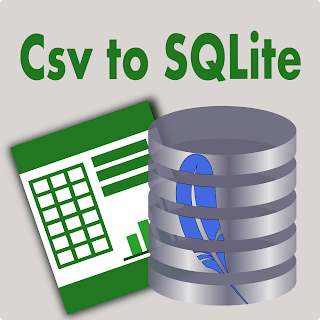

Press “Ctrl-D” to quit the SQLite3 program. (1) By Oliver Bandel (oliban) on 17:22:39 linksource I have a problem with importing a tsv file. import file. The SQLite3 program reads the CSV file, separates it into data fields and writes the data into the table. SELECT to move the data from the temporary table into your main one: CREATE TEMP TABLE csvimport (name text, age integer, gender text). The table, “in_sales,” is a database table formatted with the same number and types of fields as the CSV file. The file, “c:\files\december_sales.csv,” contains CSV data you wish to import. Most spreadsheet programs and databases can export and import CSV files. The CSV file uses a comma delimiter to separate values in table cells, and a new line delineates where rows begin and end. import c:\files\december_sales.csv in_sales Introduction A CSV is a plain text file format for storing tabular data. import with the pipe operator to invoke cat - to read directly from standard input. fPIC -dynamiclib vsv.c -o vsv.dylib got 4 warnings on compilation, still tested it with: SELECT loadextension ('vsv') CREATE VIRTUAL TABLE temp.vsv USING vsv (filename'./sample. import, but that doesn't read /dev/stdin or a temporary named pipe. I compiled vsv.c with the source of SQLite 3.32.0: curl -remote-name ' gcc -g -I. It's the column separator mentioned in the error. 4 Answers Sorted by: 9 I found an even simpler solution that still uses sqlite3.
#Sqlite import csv delimiter code
So even if you omit both, your code will work. You can use the parameters of the Import-Csv cmdlet to specify the column header row and the item. Import-Csv works on any CSV file, including files that are generated by the Export-Csv cmdlet.

Each column in the CSV file becomes a property of the custom object and the items in rows become the property values. Run the SQLite3 command, “.import,” using the following text as a guide: 1 Answer Sorted by: 4 Edit: The default conditions to import a csv file to SQLite is:, comma as column separator new line for row separator. The Import-Csv cmdlet creates table-like custom objects from the items in CSV files. Press “Enter.” This instructs SQLite3 to process files with comma-separated data. Type the following command at the “sqlite>” prompt: Here is an example in Python3 using as a separator, but consider strings like if needed.

This runs SQLite3 and opens a database called “orders” when you use it, substitute the name of your own database for “orders.” The SQLite3 program displays its own prompt, “sqlite>” indicating that you type SQLite3 commands and not DOS commands as it’s running. I would use a multi-character separator with very low probability to be in the text to import and then parse the document using a custom script. Run the SQLite3 program by typing a command use the following example as a guide:


 0 kommentar(er)
0 kommentar(er)
